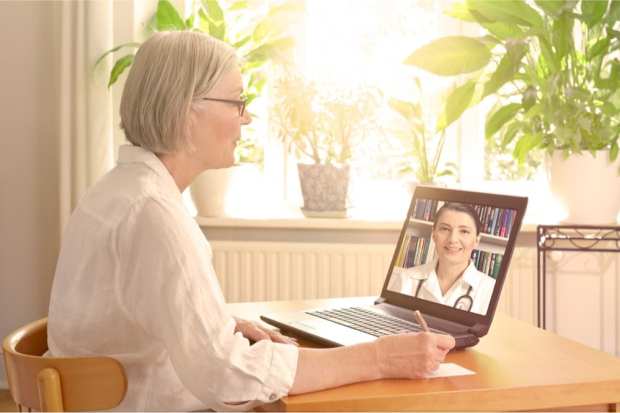Telehealth Sector Redoubles Focus on Convenient Care, Smarter Virtual Visits

Signs that the pandemic digital shift is not slowing but rather gaining force can be found in telemedicine, where recent deals and new capabilities show plenty of pep in digital trends.
Building out its whole-person virtual care concept, Primary360, telehealth platform Teladoc announced on Wednesday (July 6) that it’s adding new capabilities to its platform to strengthen virtual and in-home offerings across a spectrum of virtual health services.
Per a press release, “Primary360 members will now receive health plan in-network referrals and care coordination support; free, same-day medication delivery from Capsule, the leading national digital pharmacy; and in-home, on-demand phlebotomy with Scarlet Health. Teladoc Health’s primary care offering continues to gain market momentum, with Priority Health, a nationally recognized health plan, choosing Primary360 for its members this year.”
With no membership or subscription fee and average visits costing $75 without insurance, Teladoc is one of several platforms advancing the at-home health sector with networks of partners like Capsule and Scarlet Health, bringing hospital services to the front door.
This follows June 30 news that investment firm Francisco Partners completed its acquisition of the healthcare assets of IBM, launched as Watson Health in 2015, and now rebranded as Merative, naming former Transunion Healthcare executive Gerry McCarthy as CEO.
In that announcement Francisco Partners said, “Merative’s products will be organized into six product families, including Health Insights; MarketScan; Clinical Development; Social Program Management and Phytel; Micromedex, and Merge Imaging solutions. Francisco Partners’ investment will provide Merative with significant resources and opportunities for new investment, acquisitions, partnerships and growth.”
Built on the processing power of the IBM’s Watson supercomputer, the Watson Health effort fell short of the “moonshot” breakthroughs IBM wanted to make. Focusing on applications of artificial intelligence (AI) in modernizing healthcare with deep data is the new direction.
See also: Telemedicine App Ranking: BetterHelp Is Doing Better, Doctor On Demand Declines
Many Faces of Telehealth
Telehealth use continues rising, albeit more incrementally as the COVID-19 emergency fades and the healthcare system reorients itself around new use cases created by the pandemic.
According to The Connected Economy™: The Trend Toward Digital Healthcare, a PYMNTS report with research sponsored by CareCredit, “The use of in-person and digital healthcare has increased 2.4% since the beginning of the omicron surge in December 2021, rising from 57% engagement in December 2021 to 59% engagement in May 2022.”
A surprise finding in that study is that younger patients are more likely to be using telehealth in 2022 than older demographic cohorts. “Generation Z is the most likely of all generations to use telemedicine services, with 16% doing so,” the study found.
“This compares to 6% of millennials and bridge millennials who do the same. Millennials, however, use remote counseling the most, with 7% of millennial respondents saying they utilize only this digital service.”
Remote counseling and mental health use cases appear to be growing faster than other telehealth applications for obvious reasons: Talk therapy is easier to deliver via video call than any other type of medical intervention.
In its report “Accelerating and Enhancing Behavioral Health Integration Through Digitally Enabled Care: Opportunities and Challenges,” the American Medical Association (AMA) said, “Behavioral health integration (BHI), or the integrated delivery of both behavioral and physical health care, is essential to reaching more individuals who need behavioral health treatment and solving the nation’s growing behavioral health crisis.”
The report added that “behavioral health is a core component of primary care; however, BHI adoption among primary care practices remains low due to persistent workforce, financial, information and cultural barriers.”
That’s where telehealth is being used to close healthcare’s new “last mile” with hybrid models combining video and office visits, bringing new efficiencies to care cost in the process.
Get the study: The Connected Economy™: The Trend Toward Digital Healthcare
